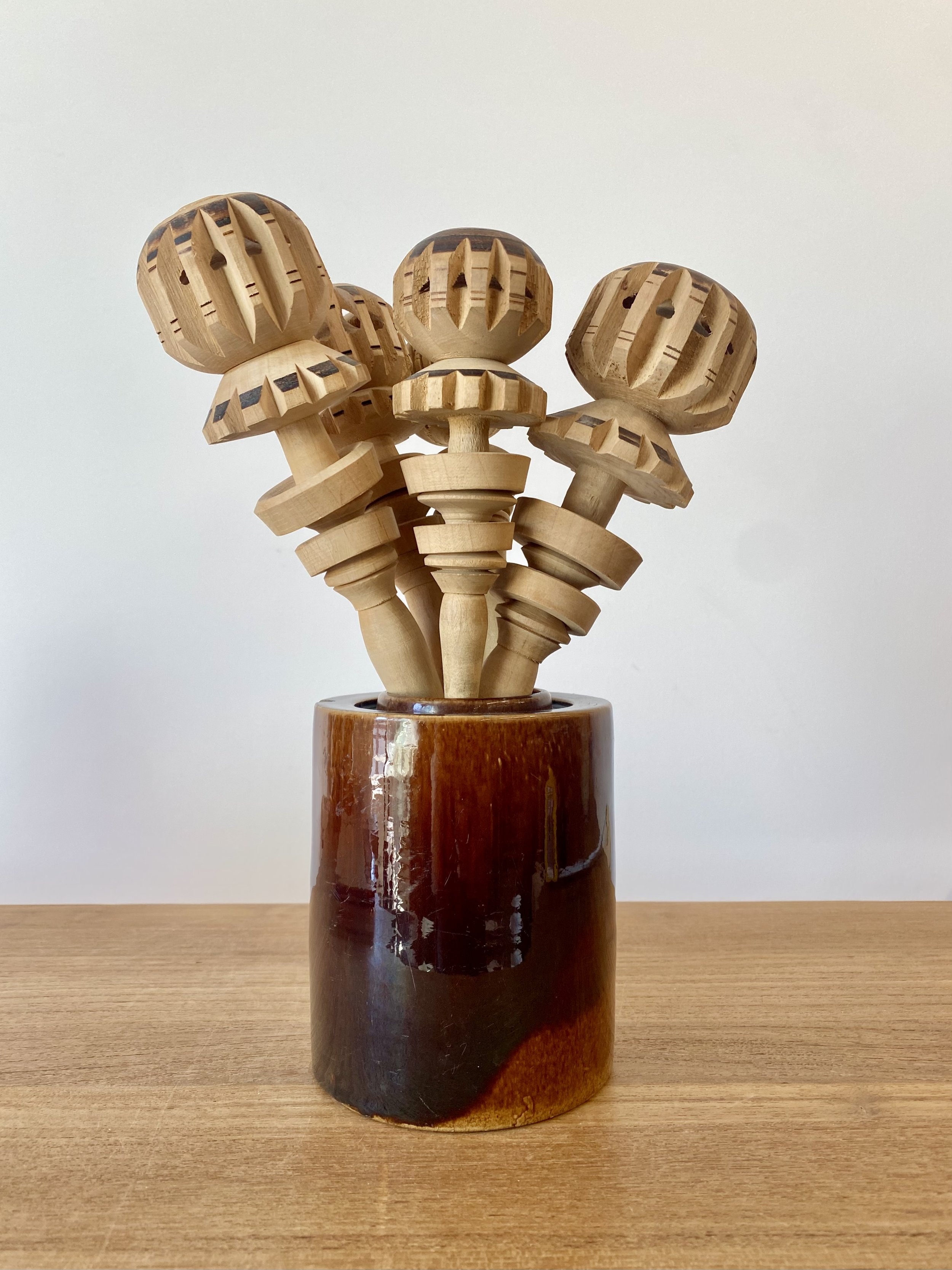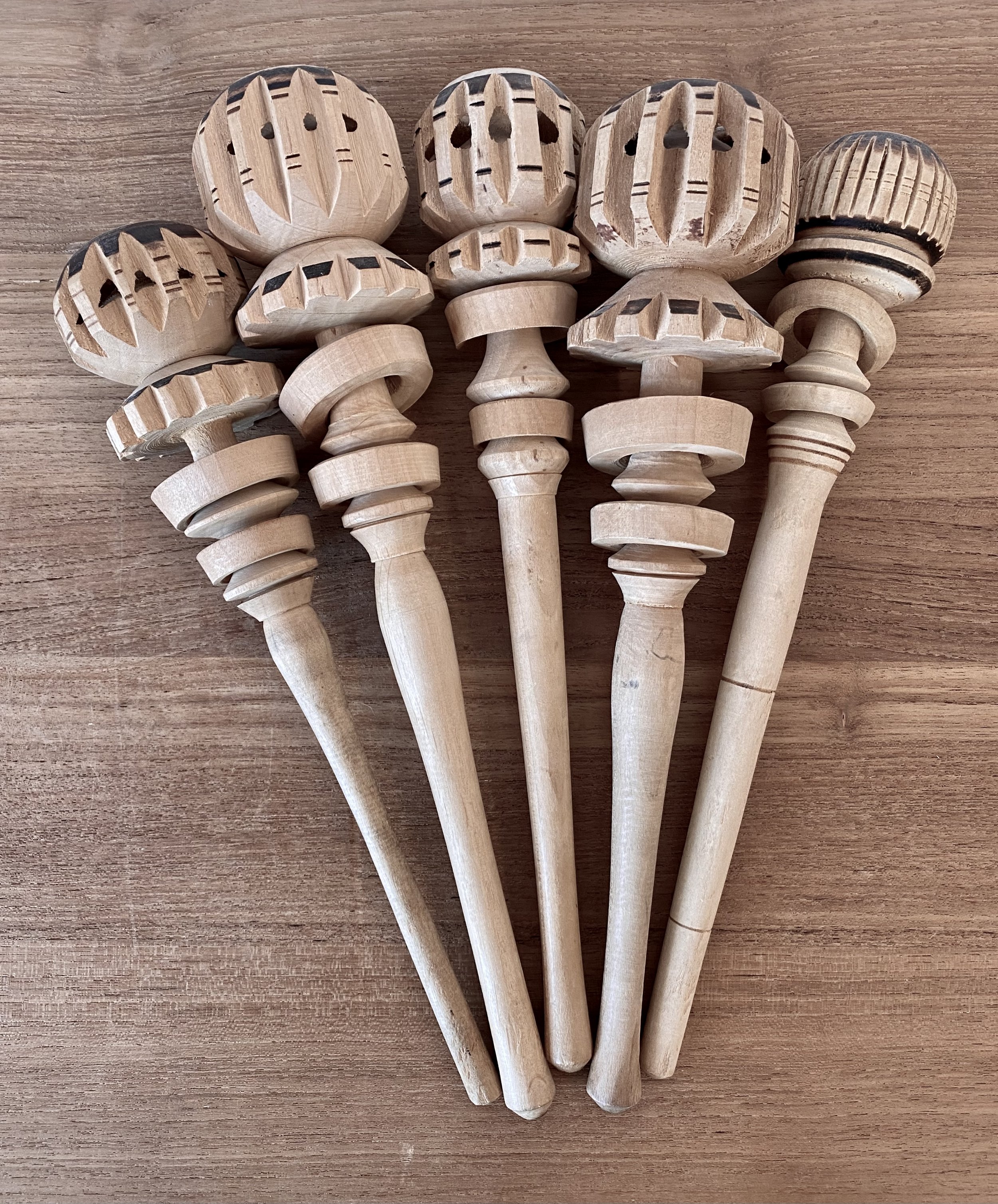 Image 1 of 2
Image 1 of 2

 Image 2 of 2
Image 2 of 2



Molinillo Bouquet
In ancient Mesoamerica, chocolate was a sacred drink, prepared by mixing crushed cacao with water (and sometimes other things, such as chile). To emulsify the chocolate and water, the ritual beverage was poured back and forth between cylindrical jars, until it was well-mixed, with a foamy froth on top. The colonial invaders from Spain liked chocolate (and must be credited with mixing it with milk, a huge innovation!). But they found the pouring ritual tedious,, and supposedly introduced the molinillo ("little mill") to speed the process along. This story may be apocryphal, however. The mixing technique involves spinning the molinillo rapidly back-and-forth between one's palms. This technique is used by a indigenous cultures all over the world to start fires, and was likely being used before European contact.
Early molinillos were simple, more like cocktail muddlers. They became increasingly complex, culminating in the 18th century with the current design. They are typically made of a hardwood (like alder), turned on a lathe. Contrasting dark patterns are created by friction, which scorches the surface of the wood. Although made in different parts of Mexico, the finest molinillos come from Oaxaca. No two are exactly alike.
Even if you don't use your molinillo to make hot chocolate or champurrado (a chocolate-and-cornmeal drink that is the "Instant Breakfast" of Mexico), they are still fascinating, sculptural objects, and works of folk art. This set of five unused molinillos look lovely in a vase, or however you wish to display them!
In ancient Mesoamerica, chocolate was a sacred drink, prepared by mixing crushed cacao with water (and sometimes other things, such as chile). To emulsify the chocolate and water, the ritual beverage was poured back and forth between cylindrical jars, until it was well-mixed, with a foamy froth on top. The colonial invaders from Spain liked chocolate (and must be credited with mixing it with milk, a huge innovation!). But they found the pouring ritual tedious,, and supposedly introduced the molinillo ("little mill") to speed the process along. This story may be apocryphal, however. The mixing technique involves spinning the molinillo rapidly back-and-forth between one's palms. This technique is used by a indigenous cultures all over the world to start fires, and was likely being used before European contact.
Early molinillos were simple, more like cocktail muddlers. They became increasingly complex, culminating in the 18th century with the current design. They are typically made of a hardwood (like alder), turned on a lathe. Contrasting dark patterns are created by friction, which scorches the surface of the wood. Although made in different parts of Mexico, the finest molinillos come from Oaxaca. No two are exactly alike.
Even if you don't use your molinillo to make hot chocolate or champurrado (a chocolate-and-cornmeal drink that is the "Instant Breakfast" of Mexico), they are still fascinating, sculptural objects, and works of folk art. This set of five unused molinillos look lovely in a vase, or however you wish to display them!